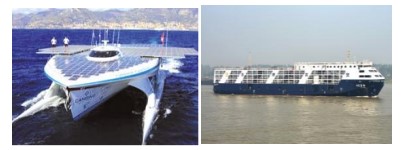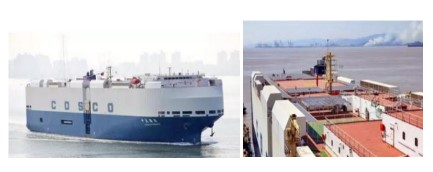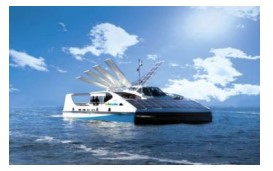In the marine environment, there is a lot of water vapor and sea breeze with many corrosive substances such as chlorides, and the extremely humid marine environment is easy to breed various microorganisms such as molds, which will pollute, color, shade and corrode solar panels. In addition, immersion salt corrosion and ship vibration caused by sea waves can cause physical damage such as cracking of solar panels, reducing the actual conversion efficiency and reliability of solar cells. Most solar cell cover sheets are made of high-transparency tempered glass. Tian Zhang and others applied nano-TiO2 coating with good corrosion resistance, hydrophobicity and self-cleaning ability in the terrestrial environment to marine solar cell cover sheets. The research results show that it has little effect on the optical properties of the solar cell cover sheet.
1.2 The vibration of the ship
When a ship is sailing, different types of vibrations will occur due to wave fluctuations, fluid motion and its mechanical vibration, mainly including the vibration of the main hull structure, superstructure, propulsion shafting, and mechanical equipment. Since solar cells are mostly installed above the main deck of the ship, the vibrations they are subjected to are mainly those generated by the superstructure. There are differences in the natural frequency of vibration of superstructures of different ship types, and it is generally between 6 and 15Hz. When there is a frequency margin of 1.1 to 1.5 times between the natural frequency of the solar cell and the excitation frequency generated by the superstructure, resonance can be avoided, so 15Hz is often the vibration frequency reference of the environment where the solar cell is located. The research of Yan Zhang and others showed that the fluctuation amplitude of output characteristics of the solar cell caused by the low-frequency vibration of the ship is acceptable.
2. Prospects of solar energy in ship
The marine solar photovoltaic system adopts different working modes according to the difference in ship type, navigation area, voyage, load power and operating conditions.
1) Off-grid photovoltaic systems: they are generally used as the main propulsion power source for small all-solar electric propulsion ships, such as "Planet Solar" solar yachts (Figure 1a), and auxiliary power sources for large ships, such as "Anji 204" inland ro-ro ships (Figure 1b).

a) "Planet Solar" solar yacht b) "Anji 204" inland ro-ro ship
Figure 1 Ships with off-grid photovoltaic systems
2) The grid-connected and off-grid hybrid photovoltaic systems: the transient stability in the operation of the power grid must be solved, and their requirements for automation management and technical safety level are high. With the development of solar cells and electronic technologies, the integrated solutions of marine solar photovoltaic systems are developing from off-grid to grid-connected and hybrid off-grid. For example, the "COSCO Tengfei" ocean-going ro-ro ship (Figure 2) adopts an integrated design scheme of off-grid and grid-connected.

Figure 2 "COSCO Tengfei" ocean-going ro-ro ship
3) The integration of new energy power such as wind energy and solar power with traditional internal combustion power and other power forms: they have become the trend of technology development of the new energy power ship. For example, the "Solar Sailor" catamaran passenger ship (Figure 3) has a hybrid power system by comprehensively utilizing wind, solar and diesel power.

Figure 3 "Solar Sailor" catamaran passenger ships
3. Conclusion
The green development of the shipping industry needs the support of green new energy ship technology, and the application of solar energy to ships as an important green renewable energy is in the ascendant.
1) The conversion efficiency of solar cells needs to be further improved. The development of new high-efficiency solar cell theories and materials and the industrialization of cell modules are worth looking forward to.
2) Solar photovoltaic technology is more suitable for multi-hull ships that are conducive to laying large-area solar panels and ships using lightweight structural materials; the development potential of grid-connected and off-grid hybrid models is great.
3) Marine solar photovoltaic systems need supporting energy storage devices. Among energy storage devices such as nickel-based batteries, lead-acid batteries, lithium-ion batteries, supercapacitors, and flywheel batteries, lithium-ion batteries have mature technology, good energy density and being cost effective. Lithium iron phosphate batteries are mostly used in ship energy storage systems, but the research and development ternary material lithium batteries with faster energy density improvement in ship should be paid attention to.